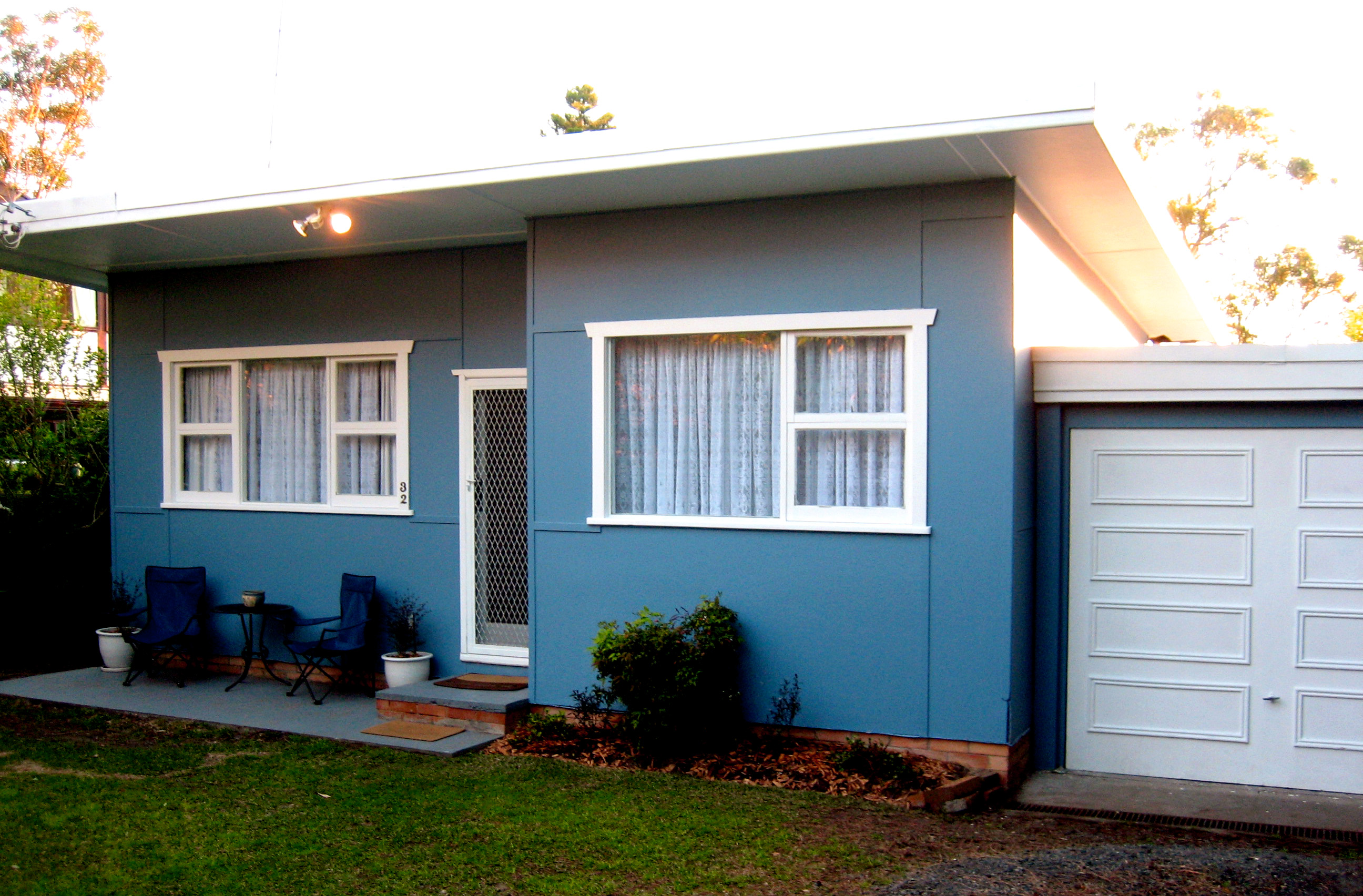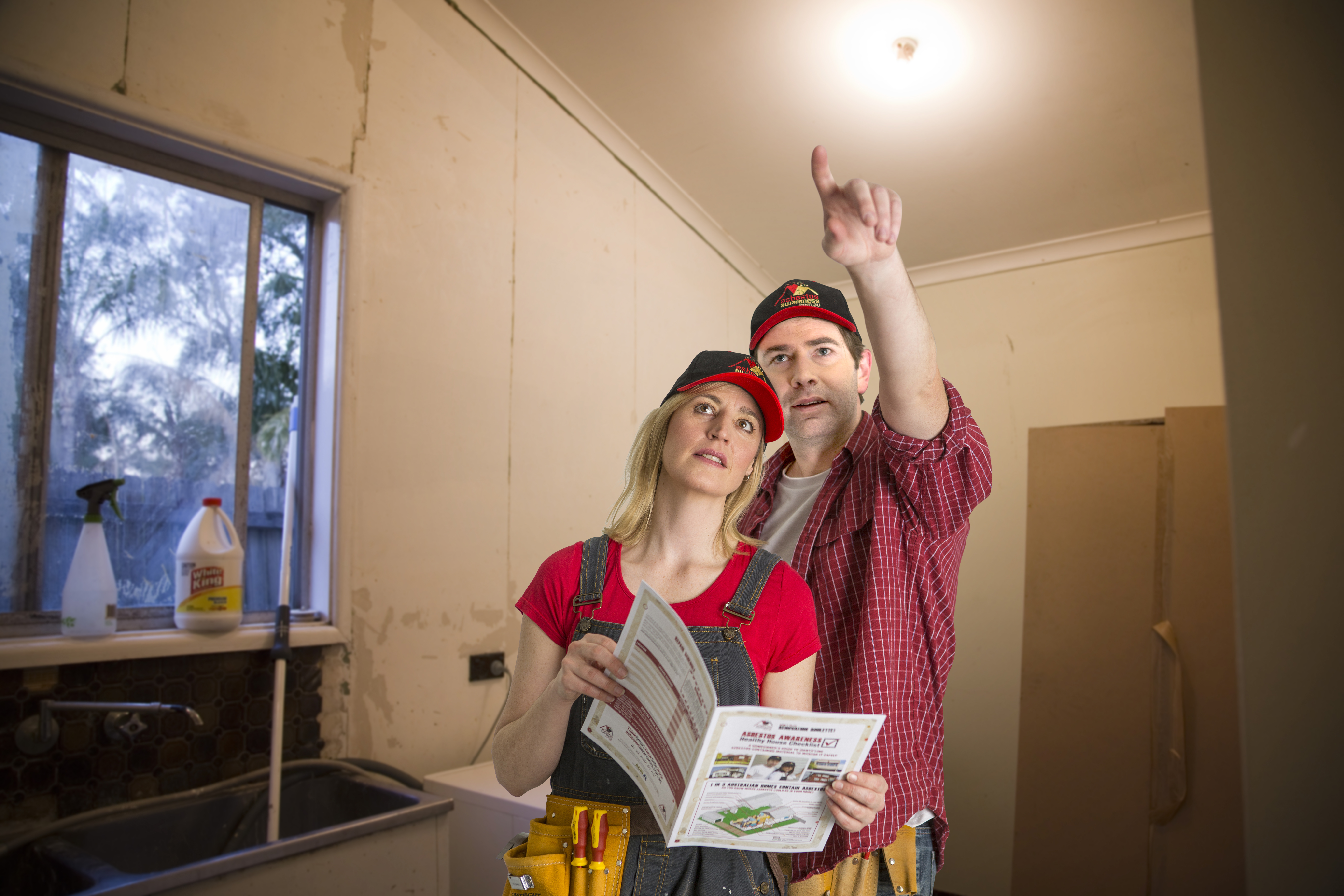 Asbestos fibres were used widely in thousands of building materials before the mid-1980s.
Asbestos fibres were used widely in thousands of building materials before the mid-1980s.
- If your home was built or renovated prior to 1987 it is ‘highly likely’ that it contains products incorporating asbestos.
- If your home was built or renovated between 1987 and 1990 it is ‘likely’ that it may contain some asbestos-containing materials.
- However, if your home was built or renovated after 1990 it is ‘unlikely’ that asbestos-containing materials will be present.
You may be surprised at the various types of products that were made from bonded asbestos cement included fibro sheeting (flat and corrugated), water drainage and flue pipes, roofing shingles and guttering – even the backing of vinyl sheet floor coverings.
The Residential Checklist is a visual guide designed to empower homeowners and renovators to develop a better understanding of the possible locations of asbestos containing  materials in and around homes, plus the knowledge to manage it safely. This practical guide enables homeowners to conduct a simple, easy to follow visual inspection of their property. By following the easy step-by-step instructions, in under an hour homeowners can have a better understanding of the types of products that might be in their home and if it’s in need of maintenance, repair or removal. Visit the Fact Sheets & Checklists page to access the Residential Checklist and additional pdf downloads.
materials in and around homes, plus the knowledge to manage it safely. This practical guide enables homeowners to conduct a simple, easy to follow visual inspection of their property. By following the easy step-by-step instructions, in under an hour homeowners can have a better understanding of the types of products that might be in their home and if it’s in need of maintenance, repair or removal. Visit the Fact Sheets & Checklists page to access the Residential Checklist and additional pdf downloads.
Asbestos 101 for Residential Property Owners, Managers and Tradies is an educational resource developed for anyone who might do work on residential properties. Developed in accordance with government Work Health and Safety Regulations and Codes of Practice, Asbestos 101 for Residential Property Owners, Managers and Tradies is a comprehensive resource that provides Australians with vital information as to why asbestos is dangerous; the risks of working unsafely with ACMs; the steps to take if they come across materials they suspect may contain asbestos; the safety procedures required for tradies who are working on residential properties; the importance of engaging an occupational hygienist or licenced asbestos assessor to confirm if asbestos is present; and, why it’s vital to only use licenced asbestos removalists to ensure hazardous asbestos materials are removed and disposed of safely in accordance with government regulations.
The use of asbestos was discontinued in all fibro sheets and products by the mid-late-1980s. After this, asbestos continued to be used principally in friction products, for brake and clutch linings. The manufacture and use of asbestos products was banned nationally in Australia from 31 December 2003. However, asbestos is still widely used in some countries. Despite being a prohibited import in Australia, goods containing asbestos are still being located at the Australian border. For more information visit the Australian Border Force website or download the Australian Border Force Fact Sheet on asbestos imports.
The Importance of Safely Managing Asbestos in and Around the Home
- Most people can’t tell whether building materials contain asbestos just by looking at them.
- Unless you take the required safety precautions and follow regulations, Don’t cut it! Don’t drill it! Don’t drop it! Don’t sand it! Don’t saw it! Don’t scrape it! Don’t scrub it! Don’t dismantle it! Don’t tip it! Don’t waterblast it! Don’t demolish it! And whatever you do… Don’t dump it!
- If you do need to work with any material that may contain asbestos, always work so there is minimal dust or small particles released from the asbestos materials. Download Fact Sheet 1 or 2 for instructions on how to do this.
- Only scientific testing of a sample of material by an accredited National Association of Testing Authorities (NATA) asbestos testing laboratory can confirm the presence of asbestos. For information on testing and accredited laboratories in your area, call 1800 621 666 or refer to their website at www.nata.com.au. When searching for an asbestos testing facility use a capital A in Asbestos.
- Asbestos materials that are in good condition are unlikely to release asbestos fibres if left undisturbed.
- If asbestos materials are in good condition, paint them and leave them alone.
- For detailed information download the handbook Asbestos – A guide for householders and the general public.
- For important information about working with asbestos read Safe Work Australia’s Model Code of Practice: How to safely remove asbestos July 2020.
Share this information on:

